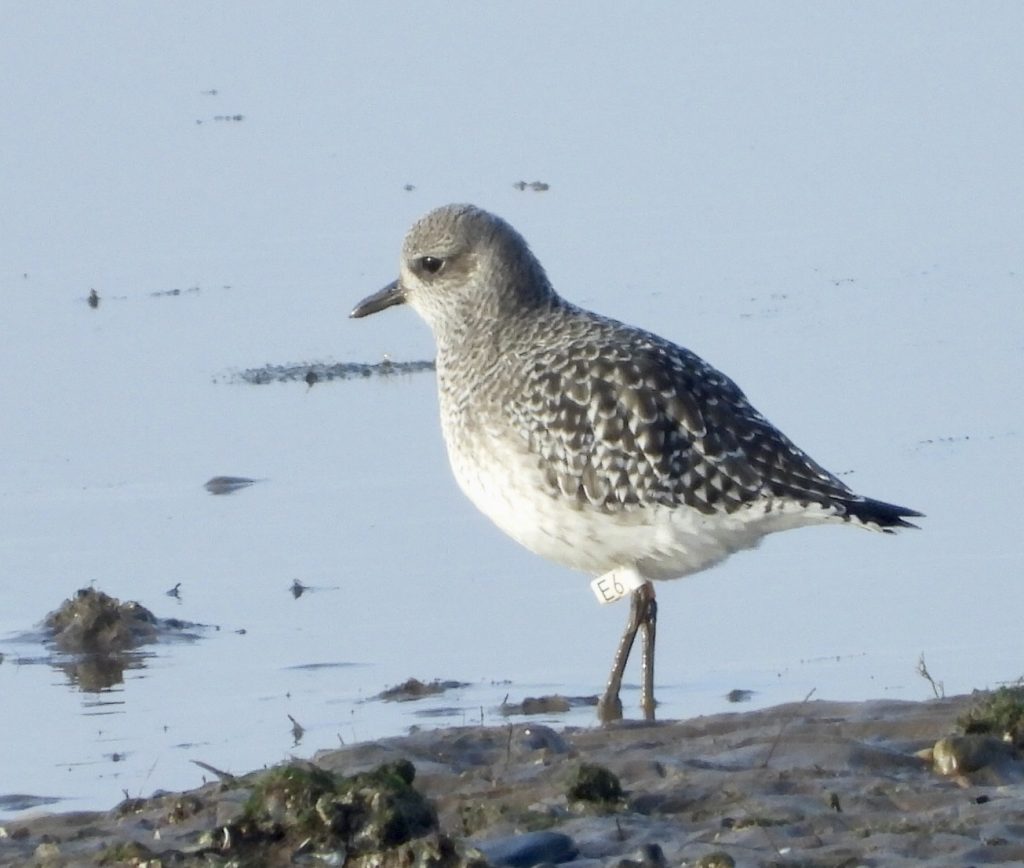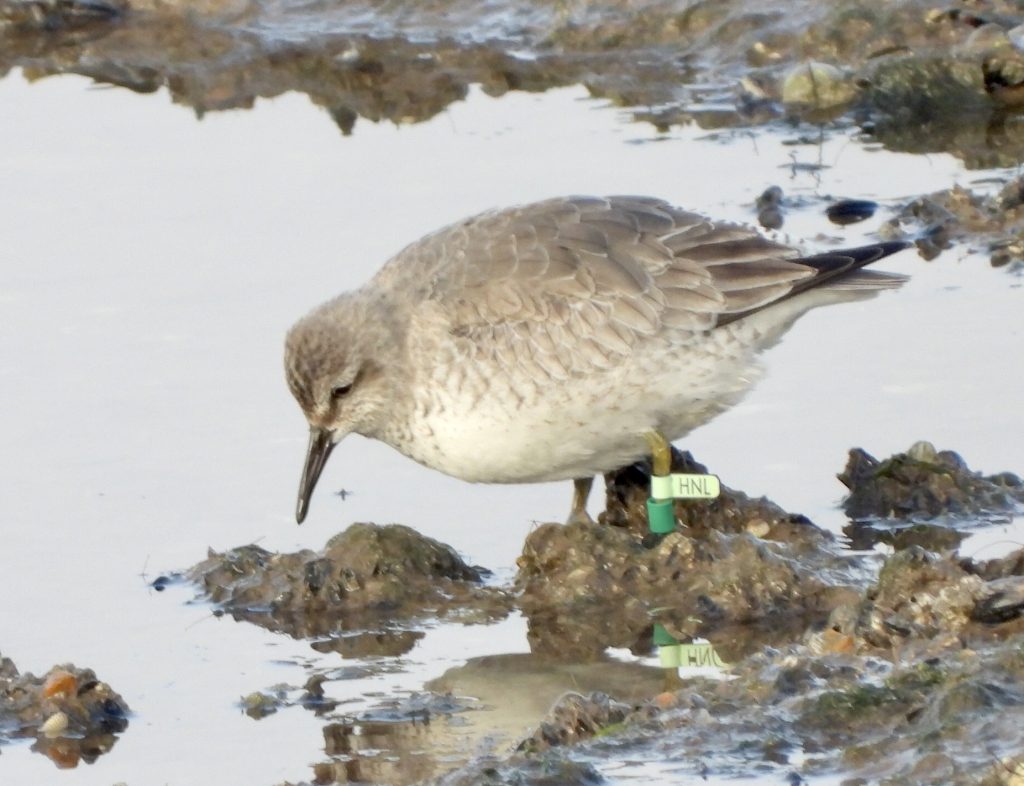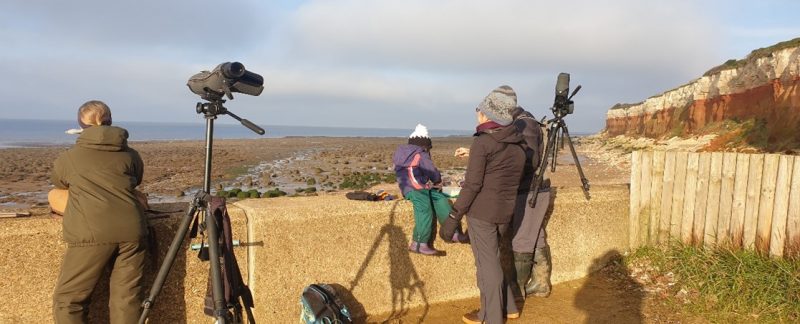Friday 9 December
Sam, David, Hilary and Cathy met up at the base on Friday evening. Cathy had resighted at Snettisham beach, observing one very regular Curlew – orange XK.
Saturday 10 December
Weather conditions were grey, still and cold with the temperature about 2 degrees C.
Cathy went to Heacham Dam to resight over the falling tide. A flock of 60 Knot were feeding on the mussel bed. There were three WWRG-flagged birds, two newly marked a couple of weeks before and the third remains unknown, as the flag was so badly stained it was unreadable. A regular GreyPlover (E6) was also there and three Curlew. Several Bar-Tailed Godwit and Turnstone were seen but none of these were colour-marked. Cathy then headed to Hunstanton.

Grey Plover ‘E6’ at Heacham Dam, by Cathy Ryden

Knot ‘HNL’ at Heacham Dam, by Cathy Ryden
Meanwhile at 10:20 Sam, David & Hilary visited Butterfield Meadow, a small park adjacent to a new housing development at the SE edge of Hunstanton. Fifteen Curlew, including eight with white WWRG flags, were observed feeding together on short mown grassland adjacent to a small watercourse. When disturbed by a dog, they flew across to the east side of the A149 and roosted in an arable field. A few minutes later they returned to the park, appearing to prefer feeding in the grass, despite greater disturbance. A single GPS-tagged juvenile Curlew, headstarted in 2022, was associated with the flock but tended to feed among rougher vegetation at the periphery of the group. More detailed observations of the feeding behaviour of wild juvenile Curlew might suggest whether this is a feature of headstarted birds.
Sam, David and Hilary moved on to the junction of North and South Promenades at Hunstanton. When they arrived at 11.30, four hours after high tide, the shoreline to the south was becoming distant, but, looking north, the mussel beds held plenty of birds at a convenient distance. A steady walk northward, now with Cathy, along the seawall then the beach, produced a wide range of waders, with the added bonus of about 45 Fulmar roosting on and flying down from the adjacent colourful cliffs.
Approximate numbers of waders seen between 11:30 and 15:15, two hours either side of low tide, were as follows:-
- 500 Oystercatcher
- 150 Redshank
- 100 Bar-tailed Godwit
- 50 Curlew
- 25 Turnstone
- 10 Grey Plover
- 8 Sanderling
- 7 Ringed Plover
- 6 Knot
- 5 Dunlin
- 5 Black-tailed Godwit
Of particular interest was a colour-ringed Bar-tailed Godwit, feeding well despite having only one leg. We were able to read the metal ring number EX65137. It was 7C orange when flagged in Jan 2018 at Heacham and was seen again in December 2018 and November 2019. The latter sighting has the comment that one leg appeared dislocated (which presumably happened some time in 2019).
Sunday 11 December
Unfortunately the base was shrouded in fog all day which prevented any further resighting.
However, we had useful discussions about kit for resighting and about the proposed replacement porch. We also assisted Cathy with making bird bags and looked at the base with the thermal imaging monocular noting that the heat loss from the top of the chimney and from each of the velux rooflights is far higher than from any of the doors or other windows
Thanks to Hilary Hodkinson and Cathy Ryden for writing this report.

